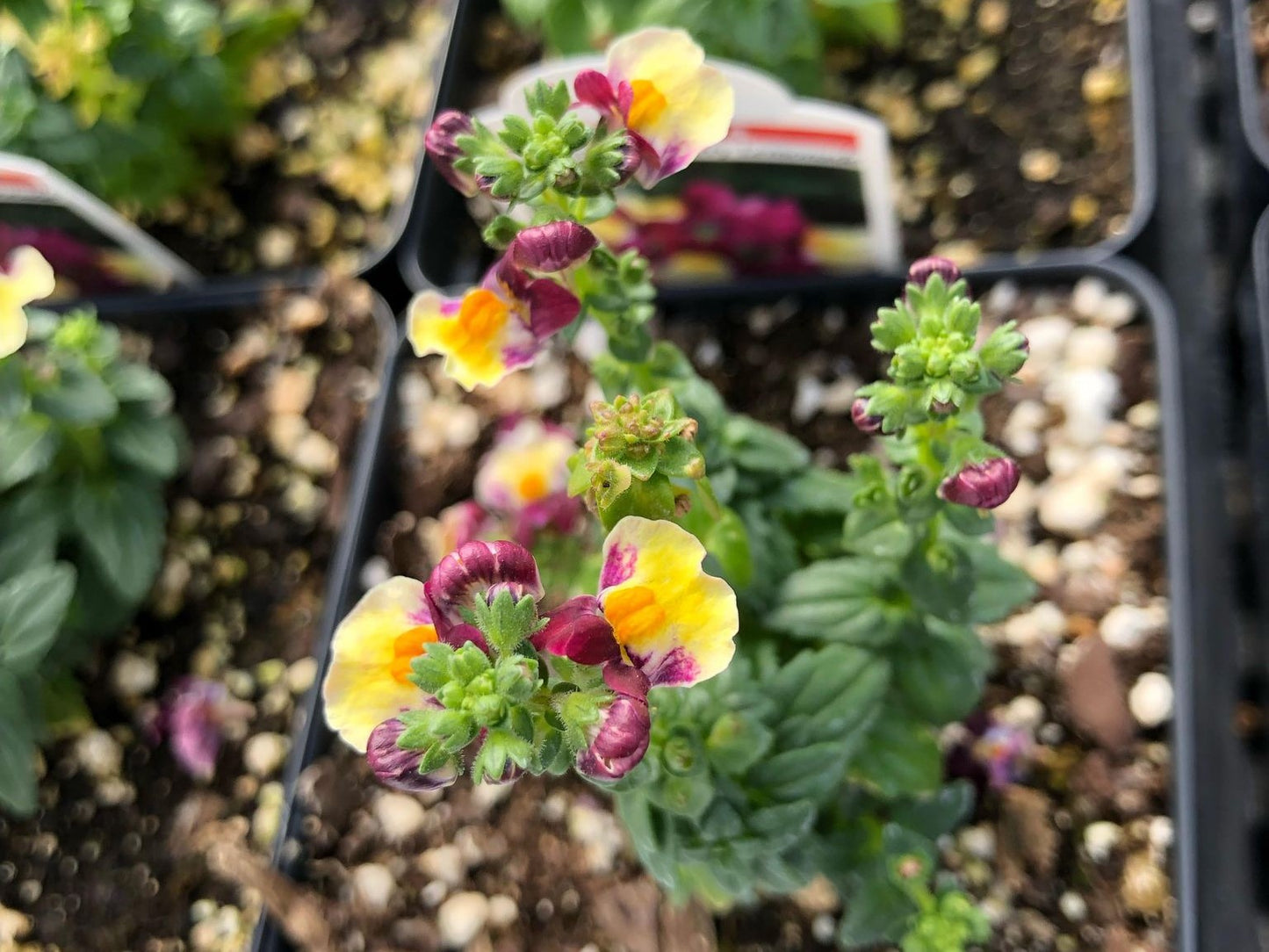Nemesia
Common Name: nemesia
Type: Herbaceous perennial
Family: Scrophulariaceae
Native Range: Temperate southern Africa
Zone: 9 to 10
Height: 1.00 to 2.00 feet
Spread: 0.75 to 1.50 feet
Bloom Time: June to frost
Bloom Description: Pale blue, pink or white with yellow throat
Sun: Full sun to part shade
Water: Medium
Maintenance: Medium
Suggested Use: Annual
Flower: Showy
Tender perennial that is winter hardy to USDA Zones 9-10. In St. Louis, it is grown as a cool weather annual in humusy, evenly moist, well-drained soils in full sun to part shade. Best performance is in full sun, however these cool weather lovers will bloom longer into the hot St. Louis summer if given some part afternoon shade. When plants do succumb to the hot weather, cut them back for a possible fall bloom or remove them from the garden. Start seeds indoors 8-10 weeks before last frost date or purchase starter plants. Set out seedlings/starter plants at last frost date. Seed should not be sown directly in the ground in spring in the St. Louis climate.
For more information visit: Missouri Botanical Garden
Type: Herbaceous perennial
Family: Scrophulariaceae
Native Range: Temperate southern Africa
Zone: 9 to 10
Height: 1.00 to 2.00 feet
Spread: 0.75 to 1.50 feet
Bloom Time: June to frost
Bloom Description: Pale blue, pink or white with yellow throat
Sun: Full sun to part shade
Water: Medium
Maintenance: Medium
Suggested Use: Annual
Flower: Showy
Tender perennial that is winter hardy to USDA Zones 9-10. In St. Louis, it is grown as a cool weather annual in humusy, evenly moist, well-drained soils in full sun to part shade. Best performance is in full sun, however these cool weather lovers will bloom longer into the hot St. Louis summer if given some part afternoon shade. When plants do succumb to the hot weather, cut them back for a possible fall bloom or remove them from the garden. Start seeds indoors 8-10 weeks before last frost date or purchase starter plants. Set out seedlings/starter plants at last frost date. Seed should not be sown directly in the ground in spring in the St. Louis climate.
For more information visit: Missouri Botanical Garden


